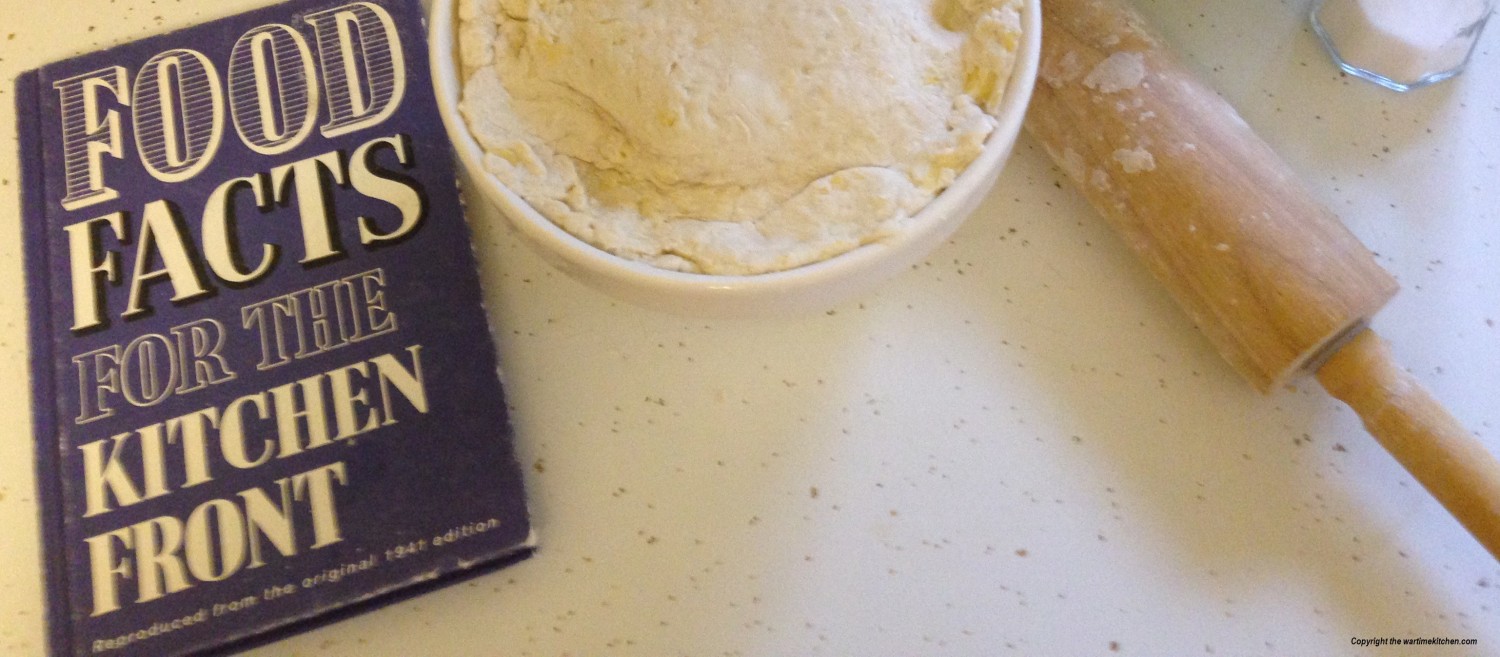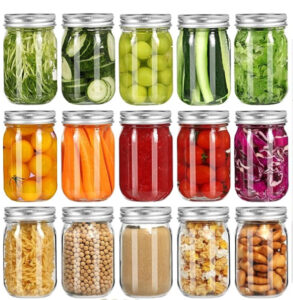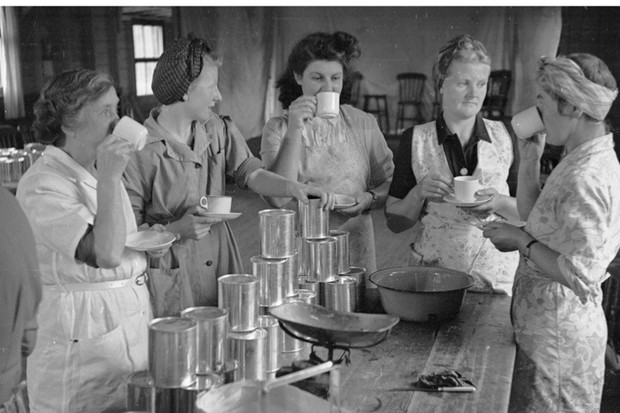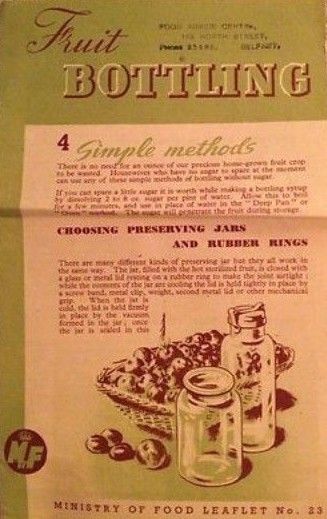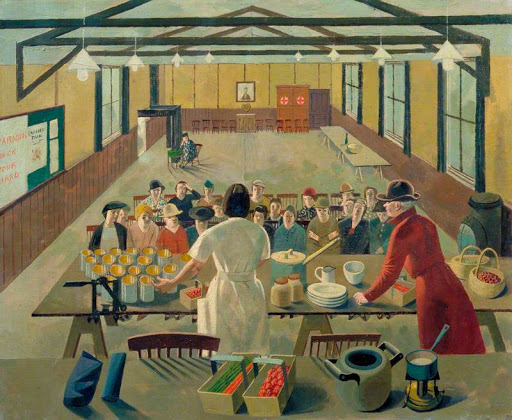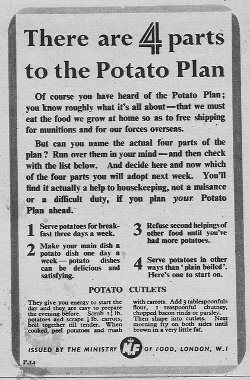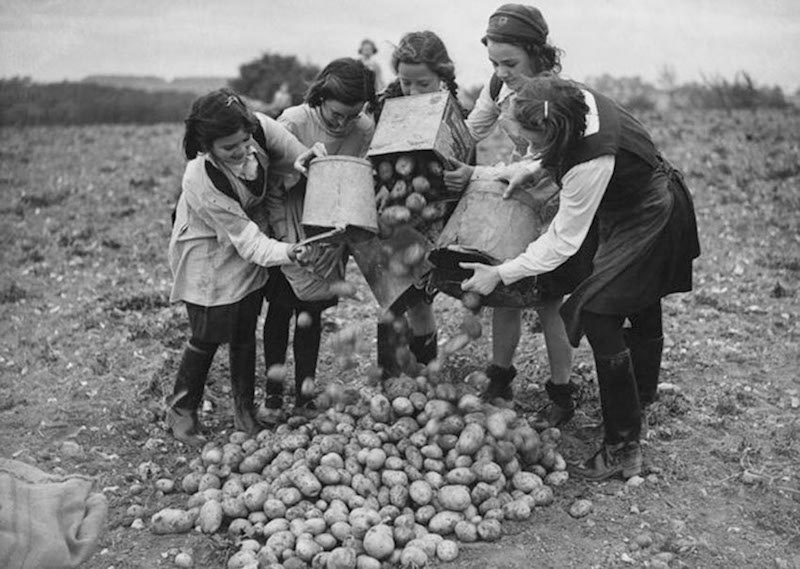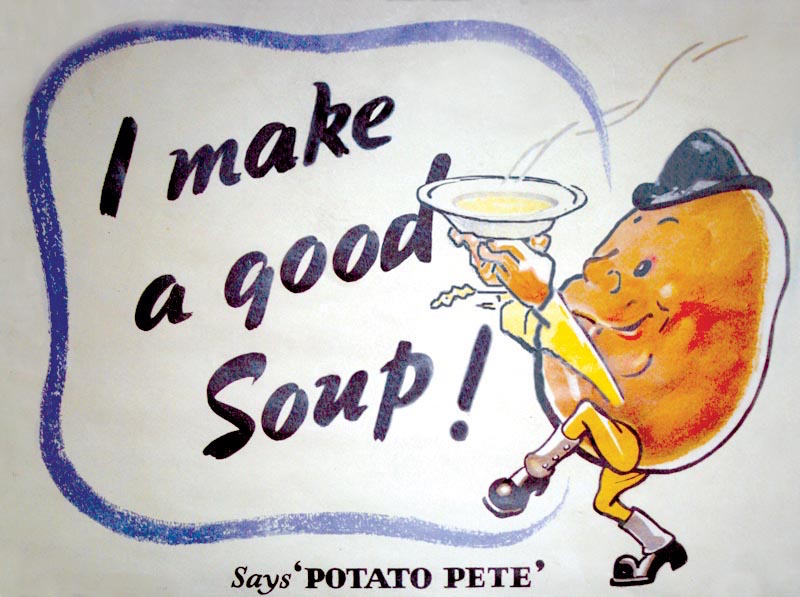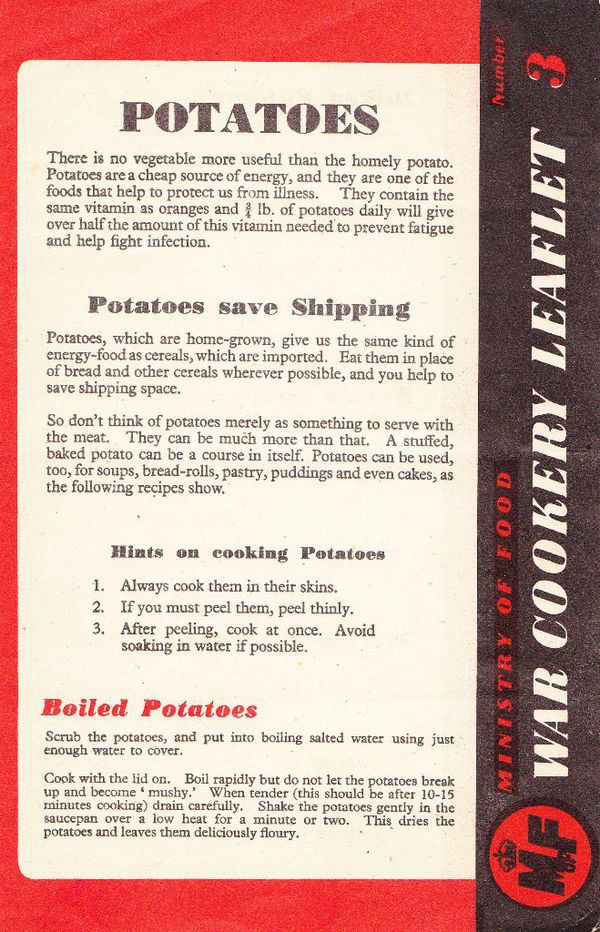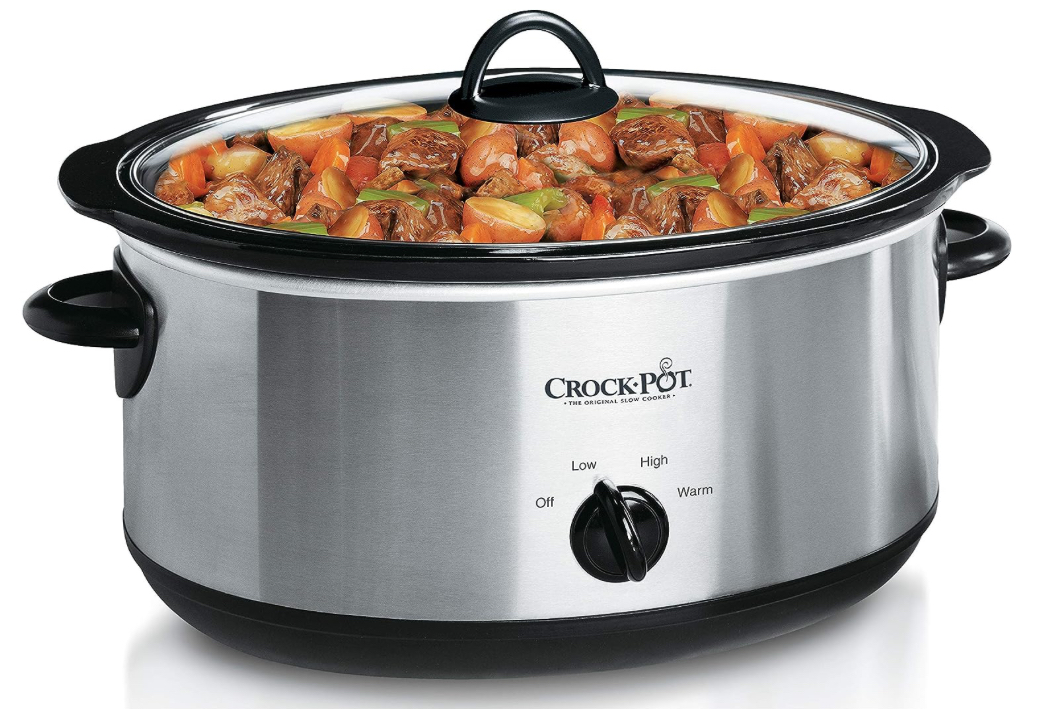Since vegetables were an important part of the wartime diet, the Ministry of Food issued the “Green Vegetables” leaflet on 18 June 1940. Since nothing went to waste, hints were included on preparing leaves and tops of vegetables.
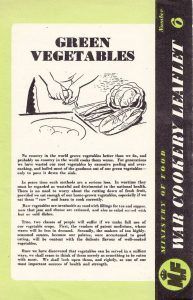
How to Cook Green Vegetables
If you have a garden don’t cut youur vegetables until you actually need them. Much food value is lost if the are left in the rack to get stale. It is wrong to soak green or root vegetables for a long time before cooking, as this wastes valuable mineral salts and vitamins. Wash them thoroughly, and, if tight-hearted, soak in salted water for not more than ½ hour.
If the outside leaves are really too tough to serve, save them for soups and stews. These dark green outside leaves have more food value then the centre.
Green vegetables must be cooked as quickly as possible as slow cooking destroys much of the vitamin, so follow these rules:-
Shred them-that is, slice them with a knife. Shred cabbages, spring greens, turnip tops, nettles, Brussel tops, even Brussel sprouts if they are large. In short, shred any green vegetable except spinach which cooks so quickly that it does not need it. Divide cauliflowers into sprigs so that they will cook more quickly.
Never drown green vegetables. You need only just enough water to keep your pan from burning-usually a teacupful will do.
Bring the water to the boil, add a little salt and sprinkle the green into the boiling water. Less salt is needed than the old-fashioned way of cooking greens, because by this method you keep in nearly all the natural salts of the vegetables.
Cook with the lid on the pan. This is important because you are going to “steam boil” the greens, and if you let the steam escape the pan may go dry.
Boil briskly for 10-15 minutes. If you can spare the time, give the pan a shake or two during that time.
Drain off any liquid from the pan and save it for gravy or soup. If you can spare a teaspoon of margarine, add it to the vegetabbles and toss well before serving. Serve at once.
If you follow these suggestions you will find that the greens are quite cooked, but crisp and full of flavour.
Tops
Broccoli tops, turnip tops and beetroot tops, have good food value and are all excellent if cooked as described above.
Cabbage with Variations
All sorts of additions can be made to cabbage as described above. A few bacon rinds chopped small: a few teaspoons of vinager and a sprinkle of nutmeg, or perhaps a shake of caraway seeds, and you have something quite new and intriguing.
Cabbage with Horseradish Sauce
Shred 2 lbs of cabbage and cook as describe. Drain and use the liquid for the following sauce:
Melt 1 oz fat in a pan, stir in 1 oz flour and cook together for 2 or 3 minutes. Then add gradually 1 teacupful vegetable water and milk (half and half if possible) stirring all the time.
Put the cabbage in a heated dish, pour the sauce over it and serve.
Spinach
Wash the spinach very throughly. Shake and put in a pan without water; sprinkle a little salt, put on the lid and cook gently until tender (about 10 minutes). Drain and serve or, if preferred, the spinach may be chopped, and a little margarine and pepper added.
Peas
When boiling fresh garden peas put a teaspoonful of sugar, if possible, and a little salt in the water as well as the mint, and be careful not to cook them too long or too fast, or they will come out of their skins. If you are cooking another vegetable, peas are delicious cooked in a steamer on the top. Sprinkle with a pince of salt and put a sprig of mint with them in the steamer. Save the water for soup and gravy.
Pea Pods
Pea pods provide a delicious dish if the clear-skinned, fleshy pods are used like this. Divide each pod into two. Hold one of the sections in your left hand, stalk end uppermost and inside towards you. Snap down about ½ inch of the pod of the stalk end towards you. Then, holding firmly, pull downwards, stripping the inside skin from the outer. With a little pratice, this is easy. Cook the fleshy outsides in very little salted water until tender (about 10 minutes), drain and serve.
Pea pods also make an excellent stock for soup.
French or Runner Beans
When young, cook whole with only the tops and tails removed. When older, the stringy vein which develops along the rib of the pod must be removed.
Most housewives like to slice the beans lengthwise. But it is a great saving in time to break them with the fingers into 2-in. lengths, and less flavour is lost this way.
Boil until tender in a very small amount of salted water. If you like your beans to glisten, add a teaspoonful of fat to the water.
Be sure to save the water. It is good as a drink by itself; or use it for gravy or soup
Broad Bean Tops and Broad Beans
The tops of broad beans, which gardeners always pick off, make a delightful dish if cooked as a green vegetable
When young, broad beans can be cooked, unshelled, in a little salted water, and eaten pod and all. Or the beans can be shelled and the pods sliced. The cooked sliced pods are very good as a hot vegetable or served coldd in a salad.
When the beans are older the pods are too tough to eat as a vegetable, but make good stock for soups.
Broad beans which have been allowed to mature in their pods may be stored for winter use. Make sure they are quite dry before packing in airtight tins. Soak and use as haricots.
Nettles
Young nettles, cooked as described above are as delicious as spinach and a splendid spring tonic
Cauliflower Leaves and Stalks
When buying califlowers, always ask for the leaves as well as the flower, as the leaves make a dish by themselves if cooked as cabbage. The stalks, cooked until tender in a very little salted water and then drained, rolled in browned breadcrumbs and quickly fried in a very little hot fat or browned in the oven, have a nutty flavour and are a new dish to most people. They are also delicious greated raw in a salad.



